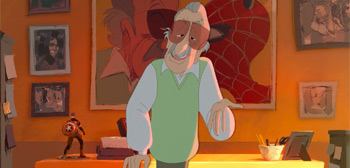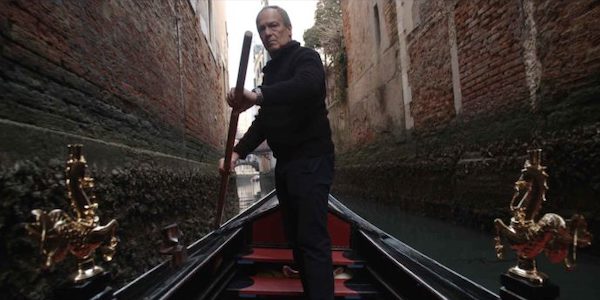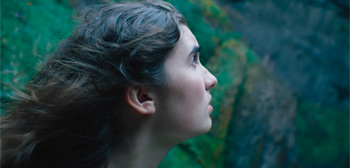The ‘Silent Night, Deadly Night’ Franchise Brings Blood to the Yuletide Season
Welcome to Carnage Classified, a monthly column where we break down the historical and social influence of all things horror, then rank the films of each month’s category accordingly. Franchises, movements, filmmakers, sub-genres, etc … It’s all here! This entry is about the Silent Night, Deadly Night franchise.
December: the joyous month of holiday cheer. Snow, colored Christmas lights, and hot chocolate by the fire are ever so peaceful. But there’s gotta be at least a little room for a bloodbath … at least one, just for some variety. Your go-to holiday horror film might be the classic 1974 slasher Black Christmas, or the more recent psychological horror The Lodge. But the Silent Night, Deadly Night franchise fulfills the Christmastime carnage quota over the course of five films and a remake.
The franchise doesn’t come without its street cred. The original 1984 film was heavily panned and highly protested by the PTA (yes, that PTA — the suburban moms were on their usual bullshit), who demanded that it be removed from theaters. The television ads were shown between family-friendly shows like Little House on the Prairie, and evidently, children were becoming horrified of Santa Claus. Even more hilarious was that people protested the film’s distribution by caroling outside of theaters…if nothing else, suburban moms have a penchant for melodrama. What better way to tackle a fictional slasher Santa than with some hearty fa la las?
But alas the original became a cult classic and spawned a number of sequels. Even to the chagrin of the Norman Rockwell wannabe Cindys and Sharons, the public has been gifted a franchise of snowy slasher cheer. Although the holiday season is proposed to be a time of endless frivolity and wonderfully warm family group hugs, quite a few people enjoy a disruption via a fatalistic film. That’s what Silent Night, Deadly Night has to offer: homicidal Santas, killer toys, and cults in plain sight … just the Christmas thrill you need.
Onto the ranks!
6. Silent Night, Deadly Night Part 2 (1987)

Silent Night, Deadly Night Part 2 might be the laziest film I’ve ever seen. This direct sequel to the original aims to concretely tether familial paths of trauma, continuing from the original film and following the story of Billy’s younger brother, Ricky (Eric Freeman). In a mental hospital after committing a killing spree, Eric pridefully relays his crimes to a psychologist. The rest of the film is told in flashbacks.
Nearly the entire first half of this ninety-minute film is told in flashbacks to the first film … using footage from the first film. It’s like rewatching the movie and makes the sequel feel like a complete waste of time. It’s not even mildly redeemed by the time the film chooses to create half-baked original content. It’s campy as all hell with loads of eyebrow acting and stoically evil “HA HA!” dialogue, but it doesn’t feel self-aware or intentionally crafted enough to be funny.
Silent Night, Deadly Night Part 2 attempts a theme: the consequences of the denial of and lack of treatment for trauma. Ricky is given a good upbringing by loving adoptive parents, but the memory of the fateful Christmas Eve, when his parents died, has left a festering wound in his psyche. Yet as we follow his rampage, the kills are boring and often without concrete reason or pattern. Even when he conclusively kills the supposed root of his metastasized issues, the scene has no impact — leaving a highly anticipated sequel feeling empty.
5. Silent Night (2012)
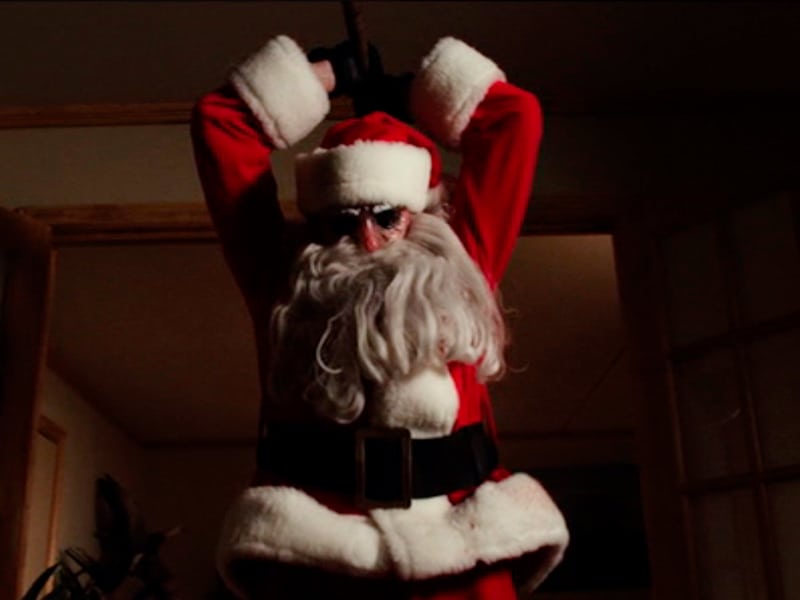
Loosely based on the original, Silent Night morphs the narrative for a 2012 audience. This shift in tone and time is signaled first by the aggressively green color grading that opens the film, though this eventually chills itself out. The film is a loose remake, following the story of a Santa killer blending into a small town’s annual Christmas festivities. With a Santa parade upcoming, slasher Santa is able to hide in plain sight.
This film takes the concept of killing the “naughty” to an extreme, and the entire narrative revolves around variously explicit degrees of sleaze. The kills follow the same pattern, airing severely on the side of brutality, rather than the habitual campy violence of the franchise’s original films. This time around, we have no idea who the man in the Santa suit is, making the film as much of a mystery as it is a slasher.
However, a villain with zero identity, origin, or motive killing a bunch of characters we never get to know makes for a one-note narrative. We have no reason to care, and no one to root for. While the sight of blowtorch murders and woodchipper demises are inherently exciting, the lack of context makes it all meaningless. The humor and emotional weight alike fail to strike a chord, and Silent Night winds up falling completely flat.
There’s a hint at a point that the holidays can be rough for lonely and isolated people, but it only comes through in an on-the-nose monologue from a random angry Santa. There’s more coherence to this film than Silent Night, Deadly Night Part 2, but once the killer is finally revealed here, it’s so disconnected from the rest of the story that we truly have no reason to find interest in anything that took place in Silent Night’s ninety-four minutes.
4. Silent Night Deadly Night 4: Initiation (1990)
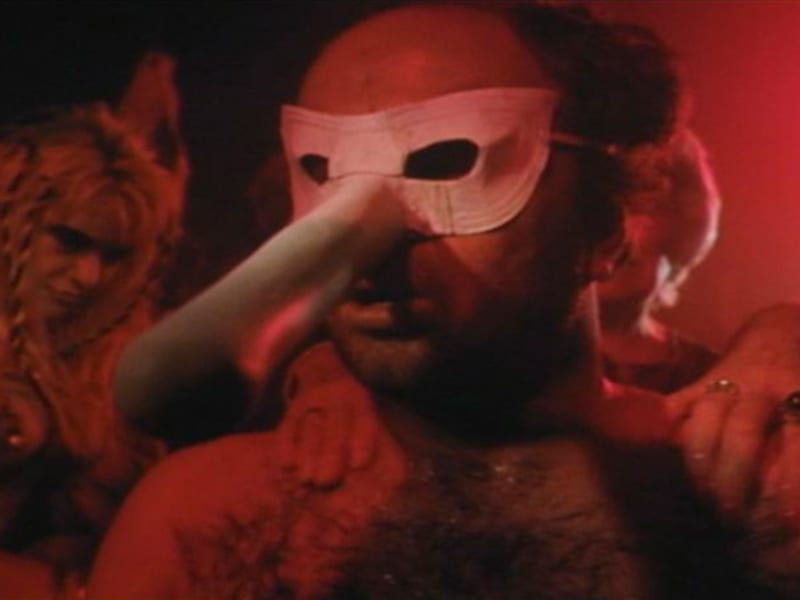
Silent Night, Deadly Night 4: Initiation is the most out-of-pocket installment of the franchise. But what else can possibly be expected from a film directed by Brian Yuzna, partnering with Screaming Mad George for the effects! This film is the first of the franchise to sever itself from the original plotline. Initiation opts for a feminist she-demon cult using their goon, Ricky (Clint Howard), to initiate a newswoman, Kim (Neith Hunter), into their gang with male sacrifices and lots of… bugs.
The man’s world theme comes as Kim vies to cover a spontaneous combustion story for her publication, only to be shafted as it’s given to her male colleague (and lover). This makes her ripe for the pickin’ of some shady culty librarian women and their bitch boy, who swoop in on her vulnerability and ruin (or save?) her male-infested existence. The film is admittedly a little incoherent and messy, but it’s fun nonetheless — chock full of absurdity and effective bloodshed.
Yuzna and Screaming Mad George’s collaborative touch is very clearly felt: this movie is GROSS. The infestation of bugs that run parallel to the rest of the film’s happenings is alarming, and the special effects that take over in the latter half are as dazzlingly campy as they are disgusting.
Where this film fits into the rest of the franchise I’m not really sure. It’s very far removed contextually and thematically, feeling more like a spiritual sequel to Yuzna’s own Society from 1989 with a dash of Rosemary’s Baby inspo. Christmas is about as present in the narrative as it is in Psycho, feeling wholly consequential, but the repulsive quality of Silent Night, Deadly Night 4: Initiation is as captivating and culty as the women who helm it.
3. Silent Night, Deadly Night 3: Better Watch Out! (1989)
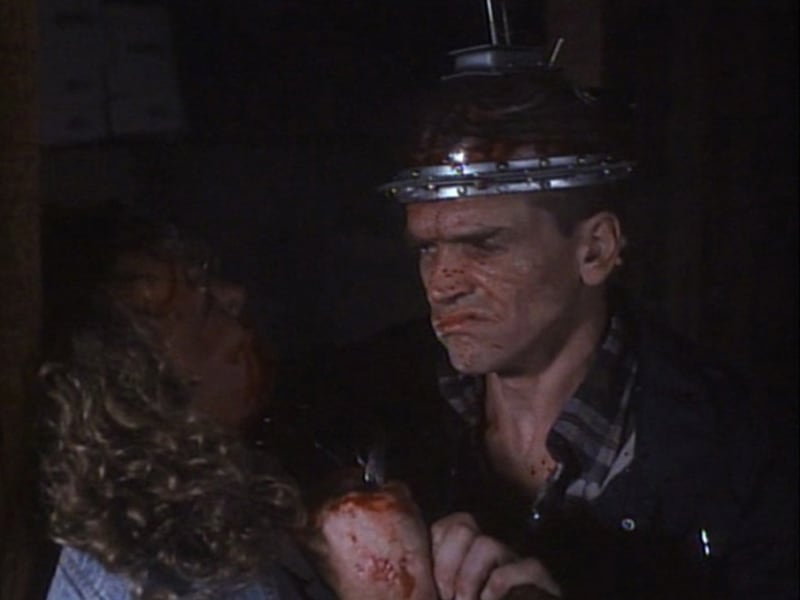
Silent Night, Deadly Night 3: Better Watch Out! is the franchise’s first true departure thematically and stylistically. It adopts more slasher tropes and delves into sci-fi territory, bringing a fresh and welcome spin after a disappointing second chapter.
After the shootout at the end of Silent Night, Deadly Night Part 2 leaves Ricky “dead,” a scientist reconstructs his brain, rendering him into a Frankenstein-esque monster with a fishbowl brain at the top of his dome. Then, he hopes Laura (Samantha Scully), a blind psychic girl, can connect to Ricky’s brain telepathically. This works, but once this tie is bound, Ricky awakens and pursues Laura to her grandmother’s house for Christmas.
This third installment uses its sci-fi horror backdrop to explore themes of good versus evil and the damning dilemma of whether or not brutal killers can be rehabilitated and forgiven. Contrary to the preposterous nature of the film’s plot, it’s comparatively nuanced in its themes and execution. The atmosphere it builds is palpable, with more slasher-eque suspense than the previous two films.
These characters have personalities, especially Laura, rather than the traditional stoicism or archetypal writing in many of the other films. Better Watch Out! also drives into the familial aspect of the franchise’s themes more successfully. There are clear relationships between the characters: they care about each other so we care about them.
With an overall moody vibe, synthy score, and tangible characters with impact, Better Watch Out! leans fully into its camp and frivolity. The context of the relationships fit perfectly into the relatable awkwardness of the Christmas season, and bring just enough blood to make it fun, too.
2. Silent Night, Deadly Night 5: The Toy Maker (1991)
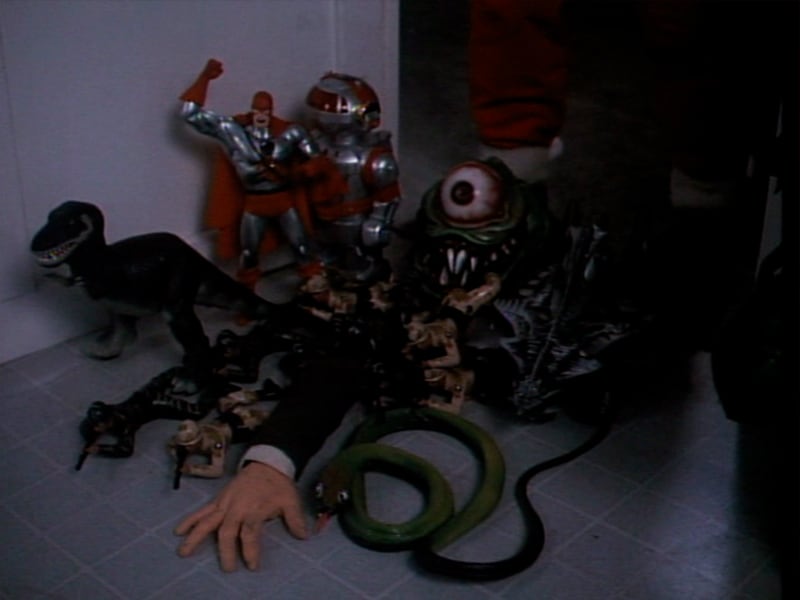
This movie is bananas. Silent Night, Deadly Night 5: The Toy Maker turns up the flamboyance and absurdity higher than the previous films in its concept more so than its execution (that goes to Yuzna’s Initiation). It’s fun as hell.
Somehow, some way, killer toys are on the market: facehugging Santas and invasive creepy crawlies are taking lives. Suspiciously, it all seems to revolve around Joe Petto’s (Mickey Rooney) toy store.
The best thing about this film is that it dives headfirst into its Christmas setting. It concerns itself more with the roots of the franchise and Yuletide horror than it does with sci-fi and cult fluff. There’s a twist on the franchise’s original “punish the naughty” theme, opting for a motif of the consequences of opening presents before Christmas (and includes a hint of the lonely holiday season theme that’s present in the 2012 remake).
There’s still plenty of trauma to be had, and a Hallmark-style set up that makes the carnage more dramatic. Yuzna is only a producer on this installment, but his influence is still felt in the gore, character arcs, and a cheeky Re-Animator easter egg. The Toy Maker is a return to form with a newfound, zealous Christmas priority. Things spill a little out of hand in the film’s final reveal, becoming laughably insane, but it doesn’t negate any of the fun the film delivered along the way.
1. Silent Night, Deadly Night (1984)
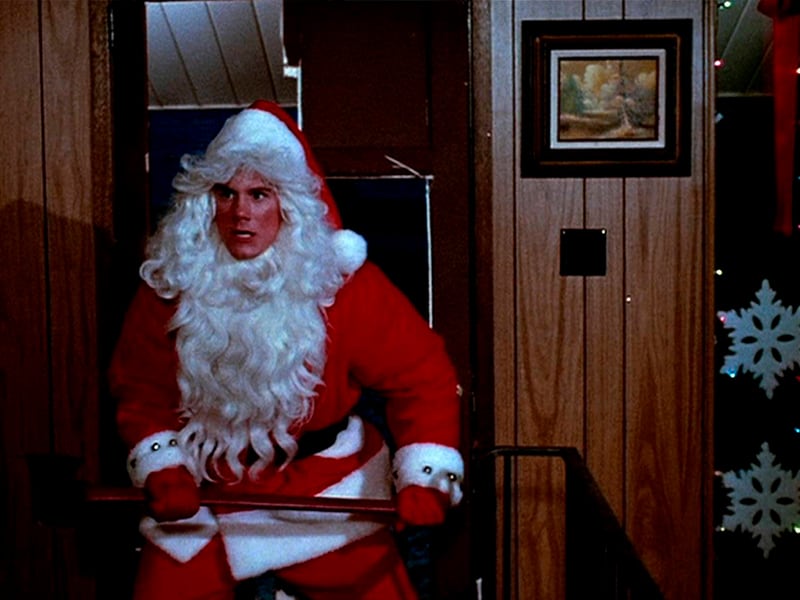
The one that trumps the bunch is, of course, the original! Billy’s (Robert Brian Wilson) life was set for one shitty spiral. As a kid, he witnessed his parents being butchered by a man dressed as Santa. Then, he finished his childhood living in an orphanage under the rule of an abusive nun, Mother Superior. After that, his part-time job at a toy shop requires him to take on the role of Santa last minute — forcing him to embody his greatest fear and reigniting his trauma, sending him on a Christmas killing spree.
Silent Night, Deadly Night makes naughty versus nice a mortal motif. Those who are naughty are “punished severely,” an edict that’s been indoctrinated in Billy since the day of his parent’s demise. The film makes use of the typical sex and violence parallels but also concerns itself with cycles of abuse and patterns of trauma.
It’s perfectly Christmas-y, mixing in the carnage and calamity with fun ’80s ease. The Christmas Eve murder of Billy’s parents is spliced with crying babies and carolers — it’s all very metaphorical. Silent Night, Deadly Night is a campy cult-classic that’s self aware of its insanity and embraces its hilarity with open arms. The film that started it all is a slasher classic that’s not stingy with the brutality, doing for Christmas what Halloween did for Halloween.
__
The holiday season can be a rough one, so watching it get beaten and bloodied could be of some relief. Or maybe the overflow of joy can get to be a little much for you, and some good old fashioned slashing can save you from the zeal of it all. Either way, the Silent Night, Deadly Night franchise and remake gifts you a total of six films loaded with Christmas-time carnage. There’s no better way to celebrate the Lord’s birthday than watching some sacrilegious shit that had suburban moms full of anger and animus … that’s expected during the holiday season anyways, isn’t it? Cheers to that.


